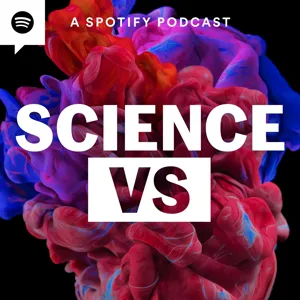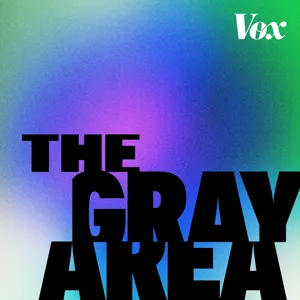Podcast Summary
Guns: Separating Fact from Fiction: Guns are used more often for self-defense than in homicides, but their presence in a community can also increase crime rates. It's crucial to separate fact from fiction when discussing the gun debate.
The debate around guns and their role in society continues to be a contentious issue, with some arguing they provide safety and protection, while others point to the harm they cause. During an episode of Science Versus, host Wendy Zuckerman visited a gun range to gain a better understanding of the issue. She discovered that her perceptions of gun ranges and their users were shaped by media stereotypes. However, her experience at the range challenged these assumptions. The episode delved into the scientific evidence regarding the number of times guns are used for good and bad purposes, and the impact of guns on crime rates. While the Second Amendment is often cited in the gun debate, the episode focused on empirical evidence rather than constitutional rights. The findings suggest that guns are used more frequently in self-defense than in homicides, but their presence in a community can also increase crime rates. Ultimately, the episode underscores the importance of separating fact from fiction when it comes to the gun debate.
Belief in Self-Defense with Guns in America: Approximately 300 million guns circulate in the US, with around 42% of households owning one for protection. The NRA advocates for this belief, and around two-thirds of gun owners report using their firearms for self-defense, although the validity of this statistic is debated.
There is a strong belief among many Americans that guns are necessary for self-defense. Estimates suggest that around 300 million guns are in circulation in the US, with roughly 42% of households owning one. The National Rifle Association (NRA) promotes this idea, stating that "the only thing that stops a bad guy with a gun is a good guy with a gun." According to some surveys, around two-thirds of gun owners report having their firearms for protection. The number of defensive uses of guns is often cited as 2.5 million per year, but the validity of this statistic is debated. While some researchers, like Gary Kleck, have used surveys to arrive at this figure, others, like David Hemenway, criticize the extrapolation of small sample sizes to the entire population. Regardless, the belief in the importance of guns for self-defense remains a contentious issue in American society.
Small percentage data can lead to inaccurate results when extrapolated to large populations: Extrapolating small data to large populations can result in significant errors due to potential misreporting, misremembering, or lying.
Extrapolating small percentage data to large populations can lead to significant errors. This was discussed in relation to a study that suggested there could be thousands of "Jesus babies" in America based on a small sample size. However, this idea was debunked as incorrect. The same issue was raised regarding a study on defensive gun uses, which suggested a much higher number than other surveys. Researcher David Hemenway warned that people may be lying, leaving things out, or misremembering, leading to inaccurate results. The National Crime Victimisation Survey, which interviews over 90,000 people, is considered the gold standard in this field due to its larger sample size and more reliable methods of asking questions. When this survey was conducted in the early 90s, it found that approximately 100,000 defensive gun uses occurred in the US each year.
Number of defensive gun uses in America is lower than believed: Despite popular belief, defensive gun uses are likely fewer than 100,000 per year and self-defense with a gun is only slightly more effective than other methods
The number of defensive gun uses in America each year is likely much lower than commonly believed, with estimates suggesting no more than 100,000. Additionally, using a gun for self-defense is only slightly more effective than other methods like yelling or threatening to call the police. However, it's important to note that while these findings challenge certain popular images and narratives, they don't diminish the importance of addressing gun violence and its devastating consequences, particularly the high number of suicides. Approximately two-thirds of gun deaths in America are due to suicides. While guns are a complex issue with many facets, it's crucial to base our understanding on accurate and reliable data.
Means restriction and suicide prevention: Restricting access to popular suicide methods can decrease the overall suicide rate, even if people find alternative ways to take their lives, as shown in Sri Lanka and Australia.
Removing access to certain methods of suicide, such as firearms, can lead to a decrease in the overall suicide rate, even if people find alternative ways to take their lives. This concept is known as means restriction. Research shows that when a popular method of suicide is eliminated, fewer people end up in taking their own lives. For instance, banning certain pesticides in Sri Lanka led to a 50% decrease in the suicide rate, despite a minor increase in hangings. Similarly, after heavy gun restrictions were implemented in Australia following a mass shooting, the total suicide rate dropped for men by 8%. While some argue that the time difference between using a gun and other methods is insignificant, most suicide researchers believe that delaying access to lethal means can increase the chances of survival for those contemplating suicide. In summary, making it harder for people to access deadly means during moments of crisis can be an effective way to prevent suicides.
Guns and crime deterrence: Some argue that guns can deter crime due to the potential threat they pose to criminals, but the data supporting this claim is debated and inconclusive.
The presence of guns, according to some commentators, can deter crime due to the potential threat they pose to criminals. This argument is based on the assumption that criminals will think twice before committing a crime if they believe the victim may be armed. This belief is supported by studies suggesting that crime rates have decreased in areas where concealed carry laws have been passed. However, it's important to note that this claim has been debated and debunked by some scientists who argue that the data used to support it is flawed and inconclusive. Meanwhile, we also learned about the fascinating behavior of southern sand octopuses, which create complex underwater homes using their mucus and create chimneys for ventilation. These creatures' ingenuity is a reminder of the wonders of nature and the complexity of the world around us.
Guns and crime: Complex relationship: The presence or number of guns in a society does not directly impact overall crime rate. While guns can increase deadlyness of hostile interactions, they do not affect other violent crimes.
The presence or number of guns in a society does not have a consistent effect on the overall crime rate. While guns can make hostile interactions more deadly and lead to an increase in homicides, they do not seem to impact other types of violent crimes such as assaults, rapes, or burglaries. The crime rate and the number of guns in a country can move independently of each other, as seen in the United States and other high-income countries. The relationship between guns and crime is complex, and despite extensive research, there is no clear answer as to why crime rates dropped significantly in the late 1990s. Therefore, it is important to remember that guns do not cause or prevent violent crime in a straightforward way.
Guns and Women's Murder Rates: Gun ownership increases women's murder rates, making crimes more deadly, despite personal beliefs of safety. Debate persists due to human nature and experiences.
The presence of guns in a state increases the likelihood of women being murdered. This correlation is stronger for women than men due to the higher likelihood of women being killed by someone they know. Guns do not impact the overall crime rate but make crimes more deadly. Despite scientific evidence, there is a debate around guns due to personal experiences and human nature. People often believe that their own safety with guns outweighs the potential harm to others. However, the more people who hold this belief, the more guns there are in circulation, leading to an increase in murders. Ultimately, the science versus guns debate highlights the complex relationship between gun ownership and safety.
The value of a dedicated team in content production: A well-researched, well-written, and well-produced episode is the result of a collaborative team effort with specialized roles.
The importance of a dedicated team in producing high-quality content. The episode was originally produced by Wendy Zuckerman, with assistance from Heather Rogers and Austin Mitchell. It was then updated by Rose Rimmler. The senior producer was Caitlin Sorey, and the editing team included Annie Rose Strasser, Caitlin Kenny, Blythe Charell, and Alex Blumberg. Fact checking was handled by Michelle Harris, and sound design and music production were done by Martin Peralta, Emma Munger, Matthew Bowell, and Sam Bair. Music was written by Bobby Lord and Emma Munger. Wendy Zuckerman is the host. This team effort ensured that the episode was well-researched, well-written, and well-produced, demonstrating the value of collaboration and specialized roles in content creation.




